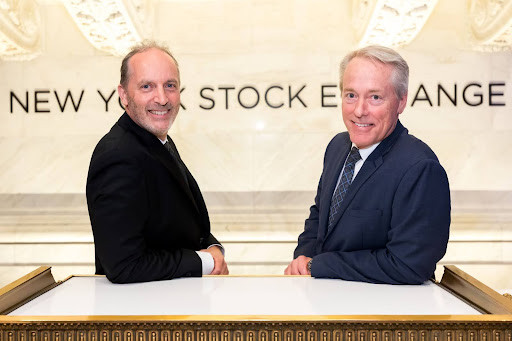Rethinking the 60/40: Larry Kriesmer on Protecting Clients From the Next Market Downturn
A Lesson From the Tech Bubble

When the tech bubble burst in 1999, Larry Kriesmer, co-founder of Measured Risk Portfolios, was a young financial advisor with a book full of "diversified" portfolios. He had carefully spread clients' assets across multiple asset sectors, believing this would shield them from steep losses.
But when the market collapsed, everything fell together.
"Clients would call and ask, 'How much worse can this get?'" Kriesmer recalls. "And I had no floor to point to. That was devastating — not just for them, but for me as their advisor."
That moment became the catalyst for what would later become Measured Risk Portfolios, which Kriesmer co-founded in 2007 with Bernard Surovsky. At its core is SynthEquity®, an options-based investment strategy designed to capture equity upside while defining risk in advance — so neither clients nor advisors are left guessing in the next 50% market decline.
Why the 60/40 Model Falls Short
For decades, independent advisors have leaned on the traditional 60/40 portfolio: 60% equities for growth, 40% bonds for stability. Kriesmer believes that model has passed its prime.
"Modern Portfolio Theory was created in the 1950s," he says. "It's no longer modern. Bonds don't always provide the protection they once did, and by keeping 40% of a portfolio in fixed income year after year, you're giving up tremendous equity performance in the years when markets are strong — which is most of the time."
The flaw, he argues, isn't in acknowledging risk, but in overcompensating for it.
"The 60/40 structure quietly admits what everyone fears: the market can fall 50% or more. But most clients — and many advisors — can't handle that level of volatility."
The Behavioral Trap
The real danger, Kriesmer says, is behavioral.
When the S&P 500 is tumbling, clients imagine the worst. A million-dollar portfolio falling to $790,000 feels like it could go to zero — especially when there's no predefined limit on further losses.
"Panic sets in, the media amplifies fear, and eventually many hit the sell button," he explains. "That's when they lock in losses and miss the recovery. As advisors, we know selling is the wrong move, but we can't offer clients certainty about how much worse it might get. That's what makes it so hard to keep them invested."
A Different Approach: SynthEquity®
SynthEquity® reframes that conversation. Instead of staring into an undefined abyss, clients know their maximum downside in advance.
"If the client asks, 'How much worse can it get?' I can point to a number on the screen," Kriesmer says. "That transforms fear into tolerable risk."
At a high level, the strategy blends U.S. Treasuries with actively managed options contracts on the S&P 500. On average, about 85% of assets remain in Treasuries, creating a stable foundation. The remaining 12–15% is deployed into options, which fuel participation in market growth.
Unlike structured notes or defined-outcome products, which often cap returns in exchange for loss protection, SynthEquity® accepts the risk of total loss in the options sleeve in exchange for uncapped performance at a portfolio level. Gains are harvested regularly, rolled into Treasuries, and redeployed — so the portfolio ratchets higher in rallies without letting option exposure balloon unchecked.
Preserving Progress Through Volatility
The design goal is simple: meaningful equity participation in bull markets, with a floor under losses when downturns arrive.
"If the S&P doubles and then drops 50%, traditional investors are back to break-even," Kriesmer explains. "With SynthEquity®, if a portfolio grows from $100,000 to $200,000, a 50% market drop might only bring it down to $170,000. That progress is preserved."
Why Advisors Should Care
For independent financial advisors, the implications go beyond performance. The real benefit is protecting the client relationship in moments of crisis.
Most clients don't leave their advisor because of long-term results. They leave when fear takes over and they feel unsupported.
By giving clients clarity on risk, advisors reduce attrition, help clients stay invested, and avoid the all-too-common mistake of de-risking at or near the market bottom, only to miss some or all of the rebound.
"We like to say our strategy is AI — Actual Intelligence," Kriesmer adds. "It's about bringing real-world risk management to portfolios in a way that's simple to explain and reassuring for clients."
Preparing Before the Next Downturn
Kriesmer's advice for advisors is clear: don't wait until the next sell-off to talk about risk.
"The worst time to rethink portfolio structure is during a downturn, when emotions are running high," he says. "Advisors should be evaluating solutions like SynthEquity® now — while markets are near highs and clients are listening with calm minds."
History records multiple occasions when markets lost half their value. Yet what unnerves investors most is not the fall itself, but the awareness that even such staggering losses do not define the bottom. Another drawdown of that magnitude will come — and the real test is whether advisors and their clients are prepared to face it without fear.
© Copyright IBTimes 2025. All rights reserved.





















